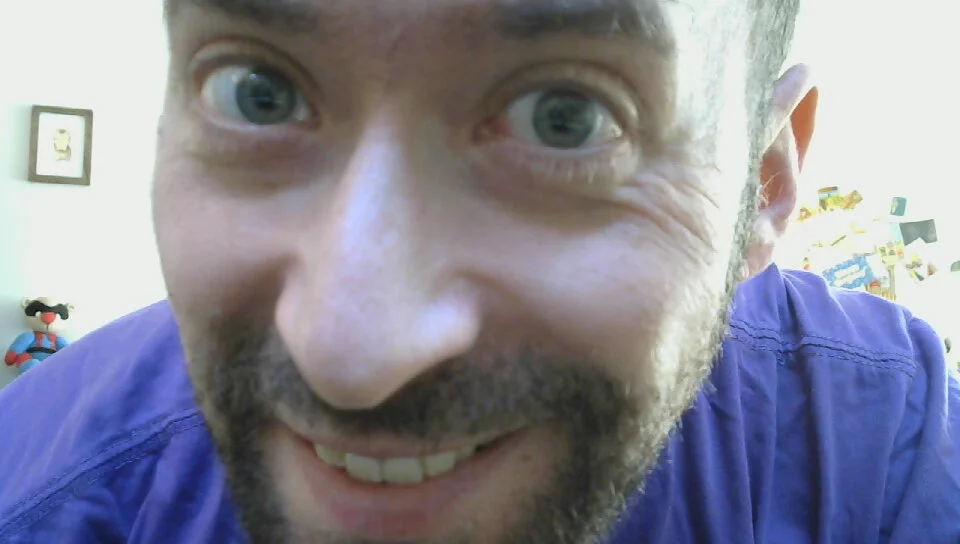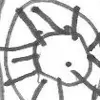I’ve seen some discussion, mostly over on Mastodon, about whether solarpunk games should include violence. They make the case that we already devote too much headspace to killing, and believe that solarpunk should be held above that, as a space to think about alternatives.
I think that’s a good goal, but I’m not sure banishing violence from the setting is a good way to go about it. Solarpunk is very much a genre space for exploring possibilities, and trying out new ways of doing things, but its also often pretty grounded in reality, whether that’s technologically, socially, or politically. Maybe I’m pessimistic, but I don’t think it’s unrealistic to expect conflict and violence in the world’s future, and I think its worth it to consider solarpunk answers to how/when to fight as well as to deescalation and conflict resolution.
The 'But why? Section of the ‘Combat’ page says: “Even if you don’t like running combat (and we’re right with you), having a combat system that is easy for a GM to use raises the stakes when situations get tense. Knowing that a fight is possible and easy for the GM to run in-game makes the risk of violence more present from the metagame perspective of players. This increases the stakes and instills standoffs with a higher urgency to deescalate.”
I really like this approach - you don’t have to add violence to your game, but you can, and much like in real life, the threat of it is always there if you can’t find those other solutions.
I think this is a really good use case, and it reminds me of an article from awhile back that I really liked, about a campaign that went even further. Using an surreally lethal shoot’em’up cowboy miniatures game from the 1970s as the mechanics for a tense campaign of politics, deception, and intrigue.
The gist is that by providing a game where gunfights were, perhaps, realistically lethal for the players and NPCs alike, the GM was able to ramp up the threat of violence to the point where the players found all kinds of clever ways to avoid it, or to minimize risk to themselves when they decided it was necessary. And because it was sparse and high risk, the tension remained tight throughout. To quote Rutskarn (the GM):
'Though a “powerful” character might tend to go first or hit more often, where they hit and how much damage they do has nothing to do with character (or player) skill. All hits debilitate, and a fifth of the time they’ll kill outright with no recourse for the victim.
[…]
Not many games discourage players from pissing off NPCs. The worst thing an aggrieved character can do is fight you, and that’s just where most RPG characters are built to succeed. I know from personal experience that, roleplaying aside, it’s tempting to conclude: “I’m going to fight this douchebag eventually. Why not get it over with now?”
Played ruthlessly, Boot Hill‘s mechanics and milieu produce very different expectations.
[…]
The vicious, tense, and bloody combat made players very afraid of the consequences of mis-stepping. There was a fear, a tension, a thrill every time they even picked up the dice; if they were attacking they knew they were taking a great risk, and if they were being attacked, they knew they may have made their last mistake.’
At a glance, that doesn’t sound like something you’d include in a solarpunk game. It’s sudden, brutal, and bloody. But this is, I think, a pretty blunt impression of what violence really looks like. There’s a reason most of us want to avoid it so badly.
Now his goal was different from ours - his simulated Toombstone was far from aspirational, and the player characters were a ruthless, corrupt pack of murderers. But the game mechanics didn’t make them do that, and the ultra-lethal combat was the main reason why they only participated in fights five times in what sounds like a months-long campaign with a plot to otherwise rival Game of Thrones.
Fully Automated’s Firefight system isn’t this vicious, and it’s also packed with less-lethal alternatives to bullets and buckshot. But I think there’s a similar chord in the decision to make violence possible, so that the threat is there. What we do in the space around it is up to us.
I like that article a lot, and I think it’s really relevant.
Which is certainly strange, because obviously a high-violence setting like the wild west is so different from solarpunk. But I think the similarity may lay in how both settings are worlds in which we don’t expect the state to have a monopoly on violence.
The wild west is kind a cauldron of vigilante street justice. Which is very bad. But Fully Automated – and any anarchist society – is still going to need to manage for instances of violence, and if the responsibility for responding isn’t assigned to a state authority, more people are going to need to be trained in response strategies. And we should show that in our stories.
This reminds me of thoughts I had reading Cory Doctorow’s “Walkaway”. It’s a great book, and the central concept is the formation of a parallel society of anarchists rejecting the world of capitalism and state power that runs their dystopian present. However it presents walking away as the primary tool for addressing threats. Whenever some force threatens or runs them off of land, they proudly pick up as nomads and build a new settlement elsewhere.
That’s a very cool concept, but as someone who has spent time in anarchist organizations, the very first thoughts that came to me were, ‘What do you do if someone is sexually menacing people in a community? And also, what do you do if someone is experiencing episodes of self harm? And what about intimate partner violence?’ From first hand experience, I can say that these don’t have a readily available solution that entails just disengaging.
There are, sadly, many ways that situations require intercession. Hopefully, we all learn to do so while inflicting no harm. But moments when force is needed to protect someone will always exist, especially in spaces where people are passionate about ideological causes. Even principles of deescalation can involve being in a fight unwillingly if someone is attacked.
I think this article does a good job examining how people play a game differently when fighting is a messy, dangerous business.
These are very much questions and circumstances I wonder about with regards to anarchist societies, the abolition of police and prisons, and even Walkaway when I read it. I know there are entire manifestos out there, I’ve had trouble parsing some of them and just haven’t gotten to others. Just the same, I hope that fiction and gaming can help us break the concepts down into lived experiences, and possibly help us imagine the solutions.
Self-hacking a new society one game and one story at a time. <3 I really love this movement! I have never been into gaming really - board, video or RPG, but it’s becoming obvious for me how much didactic impact interactive storytelling can have. This wild west game and the implications of its game mechanics are super interesting.
In the story I’m working on (which is really more alternative present than solarpunk future, but pointing to there) there is one extreme act of violence, and so far it hadn’t really found its place in the story, this discussion helps with so much additional thought material.
In the last few decades I’ve seen (and come to absolutely despise) so much g(l)orified and aestheticized violence in media - decorative blood splatters, honorable deaths, gruesome gore. Very little about the actual impact of death on the community. Why are humans attracted to stories about death and violence? Or have we just gotten used to it?
The phrase ‘containing conflict’ has come to mind when thinking about possible solutions, and that we have to self-hack ourselves into community beings, to become capable of self-organizing, after having lived in individualistic societies for so long. If you contain conflict when it’s still in a tiny stage you might never reach the phase where something prison-worthy happens, but a lot of us haven’t really learned how to do that and let things either fester or escalate.
One problem with imagining the future is that it’s tempting to try to imagine some sort of static state where we don’t have to imagine any more adjustments to society, because we have reached societal perfection - when really all we can reach is a better state from here (or a worse one if we are complacent). If solarpunk is set in the near future the trauma we live now will still be reaching to there. Prisons might still exist, but maybe they are very wholesome places to be, with ponds, flowers, kittens and comfortable homes. And hopefully they are on the way to being phased out because they are less and less occupied, as less and less people feel so lost that they commit atrocities.
Yeah, I totally agree. Especially about the need to properly imagine a society that is ALWAYS trying to reduce injustice. Because I think as we fix one injustice, our values are always shifting, and things that were previously considered tolerable become controversial and eventually unjust. So we’ll probably always be trying to fix our society.
If you have a sec, I’d be curious to hear what you think of the general justice system described in the game. The section on courts of law begins on 103, and it has some descriptions for how society deals with people who appear resistant to any form of rehabilitation.
https://drive.google.com/file/d/1XOEU4A_jP7uEFOoiobDJAStcgZS_Y5vU/view?usp=drive_link
This is kind of an extended digression, mostly about the game from the article.
There’s often this discussion about whether you should be simulating real life, or simulating media. An ‘adventure’ in the middle ages, or the age of sail in real life was almost guaranteed to be brutal, painful, and short. Gameplay rules often seem to work much better for simulating genre conventions, which is often what people are looking for anyways, I think. But the one story I think you could do perfectly using Boot Hill would be The Postman.
It’s not solarpunk, more a takedown of postapoclyptia, but I think its somewhat close by, focusing as it does on trying to rebuild society and improve things. Its very progressive, sometimes in weird ways, and I think its conclusions on what killed the previous society was really powerful. They had plagues, they had wars, but what really kicked the legs out from under society was the survivalists coming out of the woodwork to shoot their neighbors. Society was staggering, but people were still trying to solve problems until this weird cult of individualists started an using asymmetric warfare against any attempt to rebuild or help others. And throughout the story, the men in camouflage with rifles are the threat everyone really fears.
The main character spends a lot of time running from, and hiding from assholes with guns, (both regular jerks and special cammo jerks) and when he finally faces the survivalists, its a weird inversion of military scifi tropes. Instead of having a small corps of well-equipped troops to fight waves of disposable enemies, he finds himself struggling to keep his ragged militia of farmers alive against far better armed and trained survivalists. But his guys aren’t orcs, they’re desperately important to their communities, both as people with families who love them, and as farmers and makers who are needed if their communities are to survive the winter. Every life, even the ammunition spent, is a horrible waste to everyone but the survivalists. And when the fight is won, its not by military might, and its also not by compromise and understanding, but by a weird sort of sacrificial mass assassination of survivalist leaders by their would-be victims.
I think a tone like that, full of unseen gunshots and desperate hiding, would fit the gameplay described in the article. If that was lurking outside the village or farm, if that was the risk of failure when the better solutions fail, I think that would put a lot of pressure on the players to make the better ways work. Now could that be solapunk? I think maybe, with the right DM and the right group, playing in the right part of the early timeline. If the combat was a failure state, or a solution you don’t feel good about, rather than something you seek out, I could see it working.
That’s very interesting. I’m looking it up. It looks like the book was adapted into a Kevin Costner movie in '97.
I might check it out. I agree, it sounds like an interesting setting for a game. I don’t think I would have the time or attention to get around to writing something like that, but if someone else did, I’d love to see how a game like Boot Hill or the combat system in Fully Automated might execute such a vision.
I forgot about the movie - they’re pretty different though as a fan of postapoclyptia, I enjoyed both. The movie hits a surprising number of the plot points but I think you could argue it misses the actual point of the book. I saw the movie first, so my recollection is probably a little off.
I’m much the same, I don’t have the time or knowhow to write the game, but I think it’s an interesting matchup.




